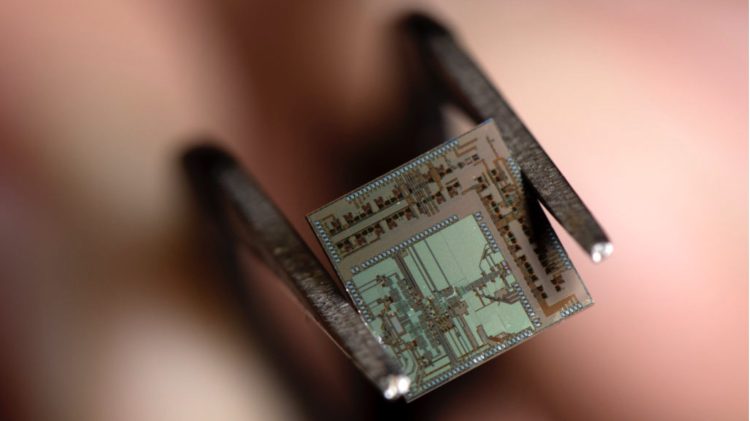Fifth-generation cellular networks and devices are still in the earliest stages of launching across the world, but research on the next generation — 6G — is already underway. Today, researchers at the University of California, Irvine’s Nanoscale Communication Integrated Circuits Labs announced that they’ve created a tiny radio chip that can send and receive data in the 100GHz frequency range, which is expected to be the basis for future 6G communications standards.
Though it seems early to be discussing 6G, leading wireless researchers in the United States, Finland, and South Korea have been focusing on the potential of “sub-millimeter wave” spectrum for roughly a year; the FCC opened a swath of 95GHz to 3THz spectrum for experimentation in March. Thanks to their unique characteristics and the lack of competing uses of the same spectra, the ultra-high-frequency radio signals are expected to quickly carry almost inconceivable quantities of data — enough to transmit human brain-level computing power from servers to pocket devices in real time.
Currently in prototype form, UCI’s invention is a 4.4-square millimeter transceiver that operates between the 115 and 135GHz frequencies, achieving a 36-gigabit per second data rate at 30-centimeter (roughly one-foot) distances. The prototype consumes just over 200mW of power, including the necessary receiving and demodulation hardware, by using a novel approach to processing data. By contrast, the latest millimeter wave 5G chips use smaller chunks of 24 to 39GHz spectrum, and achieve peak data rates in the sub-6Gbps range, albeit at considerably greater distances.
“We call our chip ‘beyond 5G’ because the combined speed and data rate that we can achieve is two orders of magnitude higher than the capability of the new wireless standard,” explained UCI electrical engineering and computer science professor Payam Heydari. “[O]perating in a higher frequency means that you and I and everyone else can be given a bigger chunk of the bandwidth offered by carriers.” Hossein Mohammadnezhad, lead author of the academic paper announcing the project, says that the “new transceiver is the first to provide end-to-end capabilities in this part of the spectrum.”
June 5th: The AI Audit in NYC
Join us next week in NYC to engage with top executive leaders, delving into strategies for auditing AI models to ensure fairness, optimal performance, and ethical compliance across diverse organizations. Secure your attendance for this exclusive invite-only event.
The researchers were assisted by TowerJazz and STMicroelectronics in fabricating the chips for the project, and they expect that the technology will have uses outside of portable electronics. In combination with the right beamforming antennas, they expect that it will eliminate the need for fiber-optic cables, cutting the costs of hardware, cooling, and power. Similar technology will also help next-generation autonomous vehicles and enable even more powerful broadband services.

